An electromechanical valve for controlling the flow of liquid or gas is called a solenoid valve. The most popular solenoid valves are direct-acting (direct-driven) and pilot-driven (or pilot-controlled). Pilot-controlled valves open and close the central orifice in the valve body. The most common variety of solenoid valves is pilot-driven valves. Despite being the only flow path in the valve, direct-driven solenoid valves open or close the primary valve orifice directly. Applications or systems that require low flow rates or low-pressure differentials across the valve orifice use direct-driven solenoid valves. Solenoid valves come in a variety of varieties. Read More…
Solenoid Solutions manufacturers custom direct-acting 2 and 3-way solenoid valves and multi-valve manifolds for OEMs in the medical, appliance, transportation, power generation and industrial equipment markets.
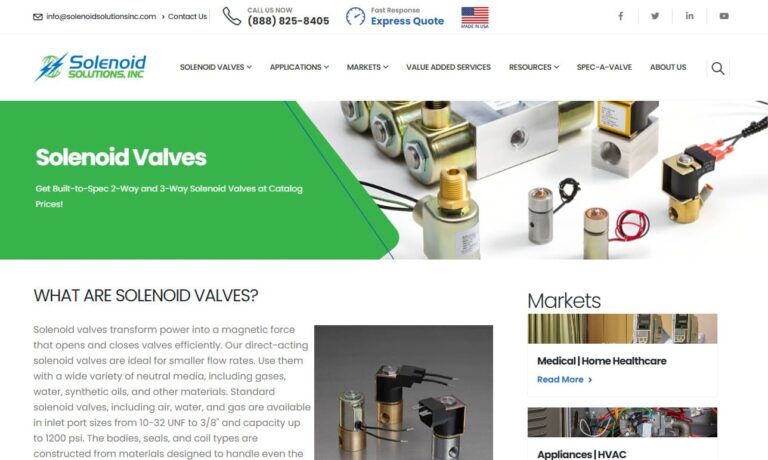
Our solenoid valves are all tested in house following very strict quality guidelines. We opened our doors in 1936 and ever since then we have been committed to bringing top of the line products and customer service that cannot be beat!
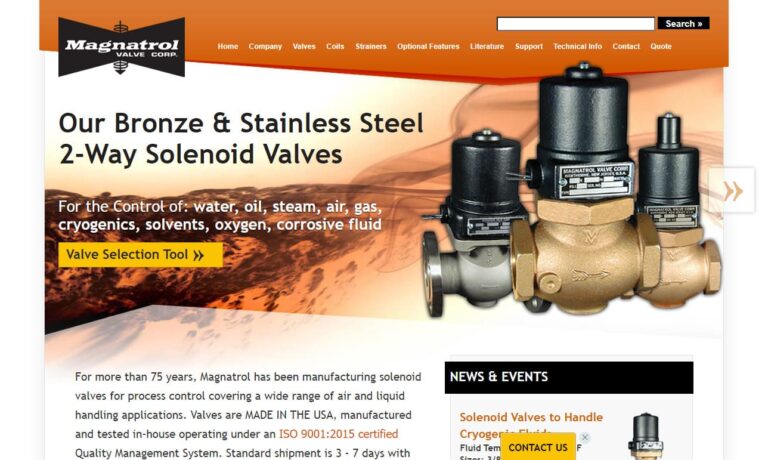
At Electric Solenoid Valves, we specialize in providing comprehensive solutions for solenoid valves, tailored to meet the diverse needs of our valued clientele. With expertise in fluid control systems, we have established ourselves as a trusted leader, known for our unwavering commitment to quality, innovation, and customer satisfaction. Our product offerings encompass a wide range of solenoid...
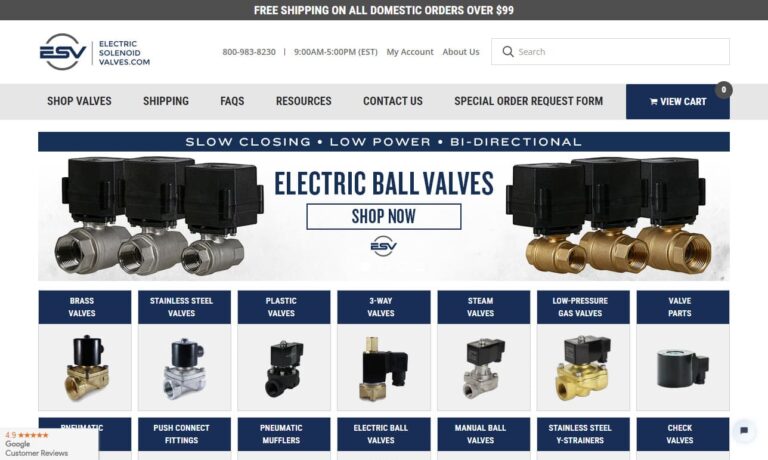
Deltrol Controls manufactures and designs a full line of stock and custom solenoids, electrical relays, dispensing valves, and custom switch assemblies. Customer satisfaction is our number one priority so we employ talented workers and stay up-to-date with the latest technology. Whatever your specific need is, Deltrol Controls has the solution. To receive a quote or more information please...
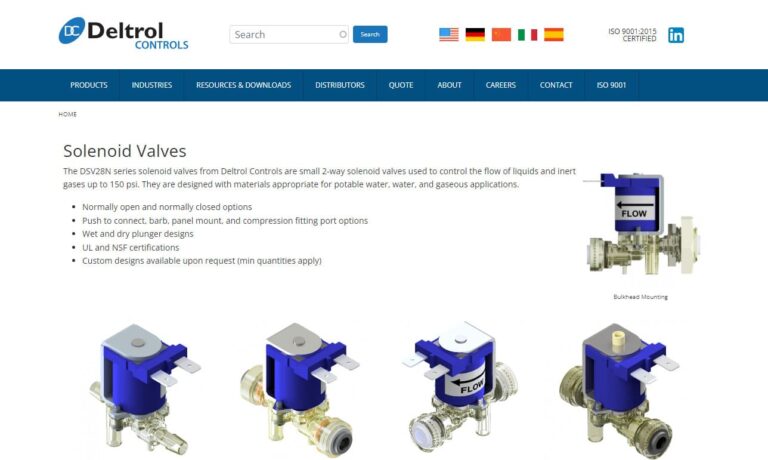
Versa® Products offers a wide range of pneumatic control valves, air valves and solenoid design. We have maintained our commitment to quality products and services since our company was established in 1949. We are a solenoid valve manufacturer, offering solenoids in brass and stainless steel.
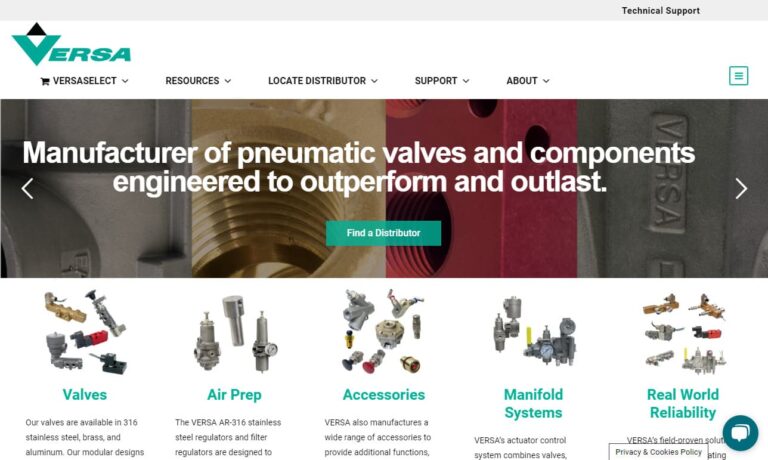
More 3 Way Solenoid Valve Manufacturers
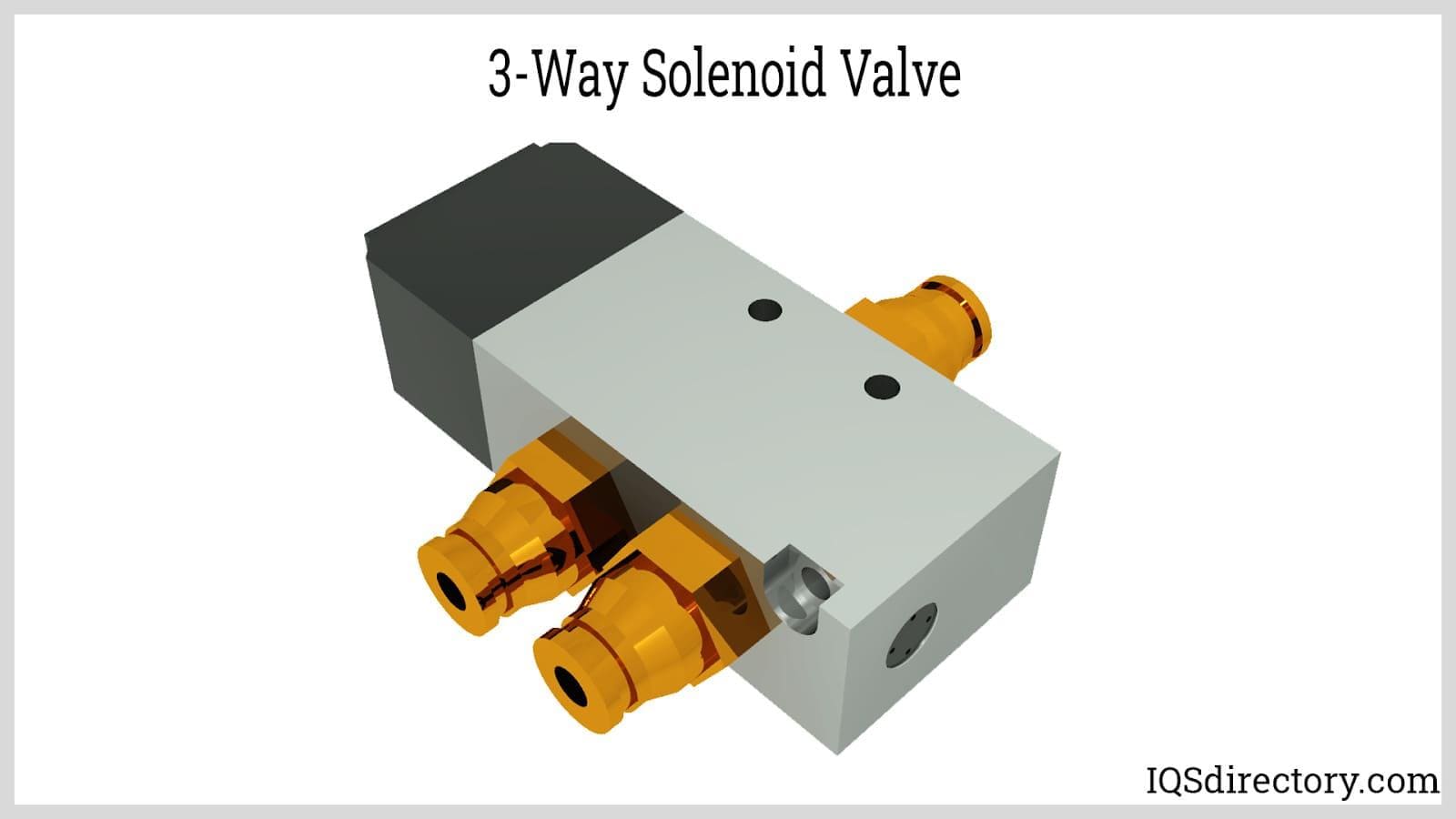
How do 3-Way Solenoid Valves Function?
Utilizing 3-way solenoid valves, gas or liquid flow in a pipe can be closed, opened, dosed, dispersed, or combined. A solenoid valve's circuit function conveys the apparatus's specific function. These solenoid valves operate according to several operating theories, depending on the application. However, the essential principle of operation is the same for all solenoid valves. Electrical power is used to control a 3-way solenoid valve. A solenoid, an electric coil revolving ferromagnetic core (plunger) in the middle, is a valve component. When the plunger is at rest, a small aperture is sealed off.
The coil creates a magnetic flux when an electric current passes through it. When the magnetic field propels the plunger, the orifice is opened. This process is the fundamental idea behind how solenoid valves open and close. The two essential components of a solenoid valve are the solenoid and the valve body. An electromagnetically inductive coil surrounds an iron core known as the plunger in the middle of a solenoid. The housing surrounding the coil, which is frequently made of iron or steel, concentrates the magnetic field created by the coil.
When at rest, a 3-way solenoid valve may be either normally open (NO) or normally closed (NC). In the de-energized state, a normally-closed valve is closed, and a normally-open valve is open. Numerous turns of tightly wound copper wire make up the coil. This wire experiences an electrical current, which generates a high magnetic flux.
A small spring attached to one end of the plunger is overcome by the magnetic flux created inside the coil's body when an electrical current is run through the coil's windings, drawing in the plunger. Electrical energy is transformed into mechanical force by a solenoid to operate. Lifting the plunger activates the seal, which opens the aperture and permits media to pass through the valve if it is normally closed. The plunger lowers when the valve normally opens, causing the seal to close the aperture and stop media flow.
The shading ring (also known as the shading coil) prevents the buzzing and vibrating of the AC (alternating current) coils. The face of the magnet assembly or the armature of an alternating current solenoid that has a few turns of an electrical conductor, frequently copper or aluminum, is known as a shading coil or shading ring. The major tasks of the shading coil are to supply a large phase-shifted magnetic field, guard against mechanical harm to the magnet and power contacts, and suppress unwanted noise.
Types of 3-Way Valves
Valves for 3-Way Normally Open Solenoids
Three pipe connections make up a 3-way, normally-open solenoid valve: the stop port, the body orifice port, and the cavity port. The body orifice and the stop orifice, which are always open, are its two orifices. This design enables two flow pathways. First, the plunger is raised when the power is turned off, sealing the stop orifice and permitting flow through the valve from the body orifice port and out the cavity port. The body orifice is sealed off, and the stop orifice is opened when the coil is energized to enable flow through the valve from the cavity port and out the top port.
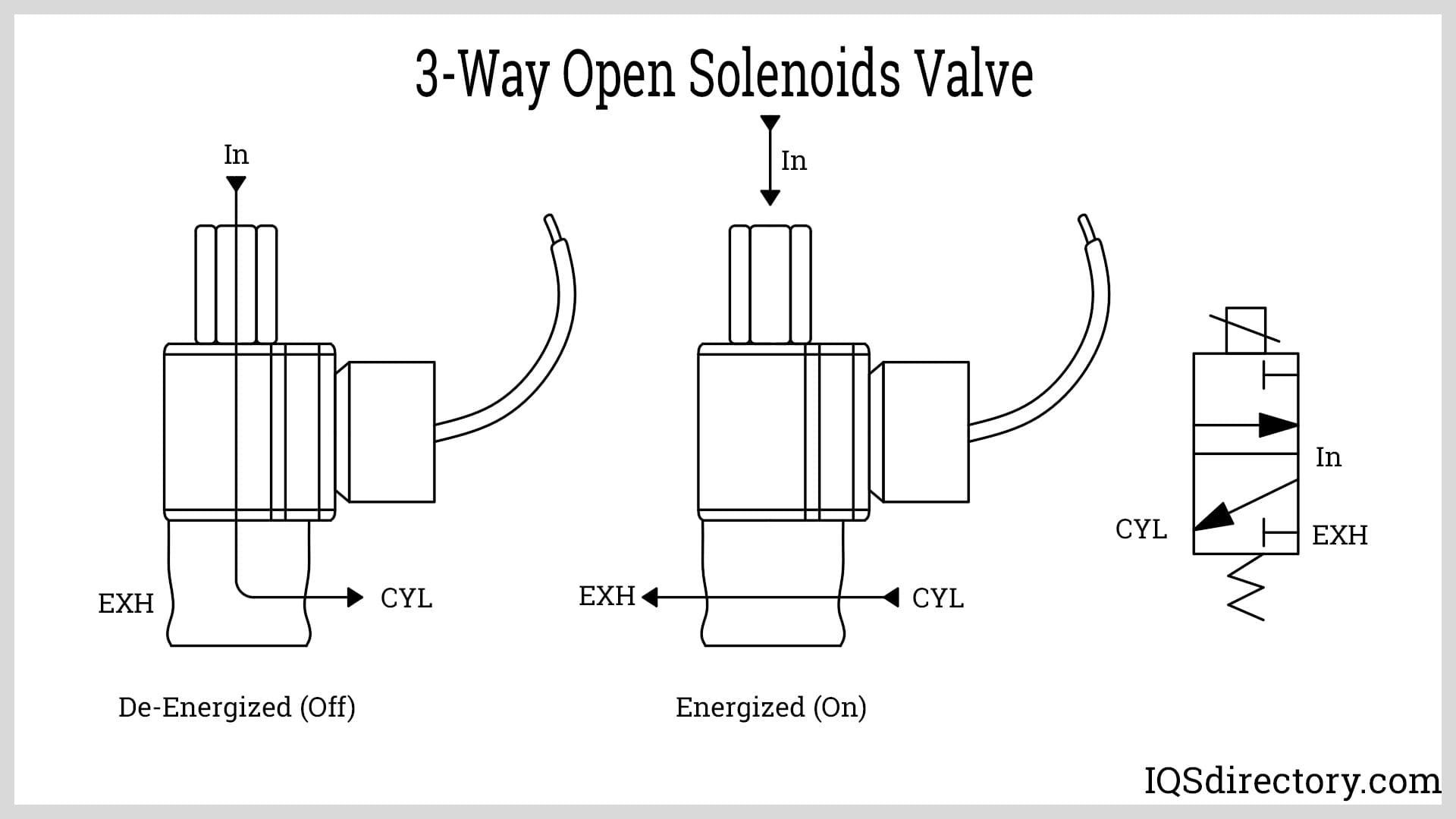
Valves for 3-Way Normally Closed Solenoids
The cavity port, body orifice port, and stop port are the three pipe connections on a 3-way, typically closed solenoid valve. The body orifice and the stop orifice, which are always open, are its two orifices. This enables two flow pathways. First, the plunger closes the body orifice and opens the stop orifice when the power is turned off, allowing flow through the valve from the cavity port and out the stop port. As soon as the coil is turned on, the plunger is raised, blocking the stop orifice and opening the body orifice, allowing flow from the body orifice port out the stop port and through the valve body.
Directionally Solenoid Valves With a 3-Way Option
The cavity port, the body orifice port, and the stop port are the three pipe connections on a 3-way directional control solenoid valve. The body orifice and the stop orifice, which are always open, are its two orifices. This enables two flow pathways. First, the plunger is raised or lowered when the valve is activated. Then, raising the plunger, the stop orifice is sealed off, and the body orifice is opened, allowing flow through the valve's body. Then, when the plunger is depressed, the body orifice is sealed off, the stop orifice is opened, and the flow is directed through that port.
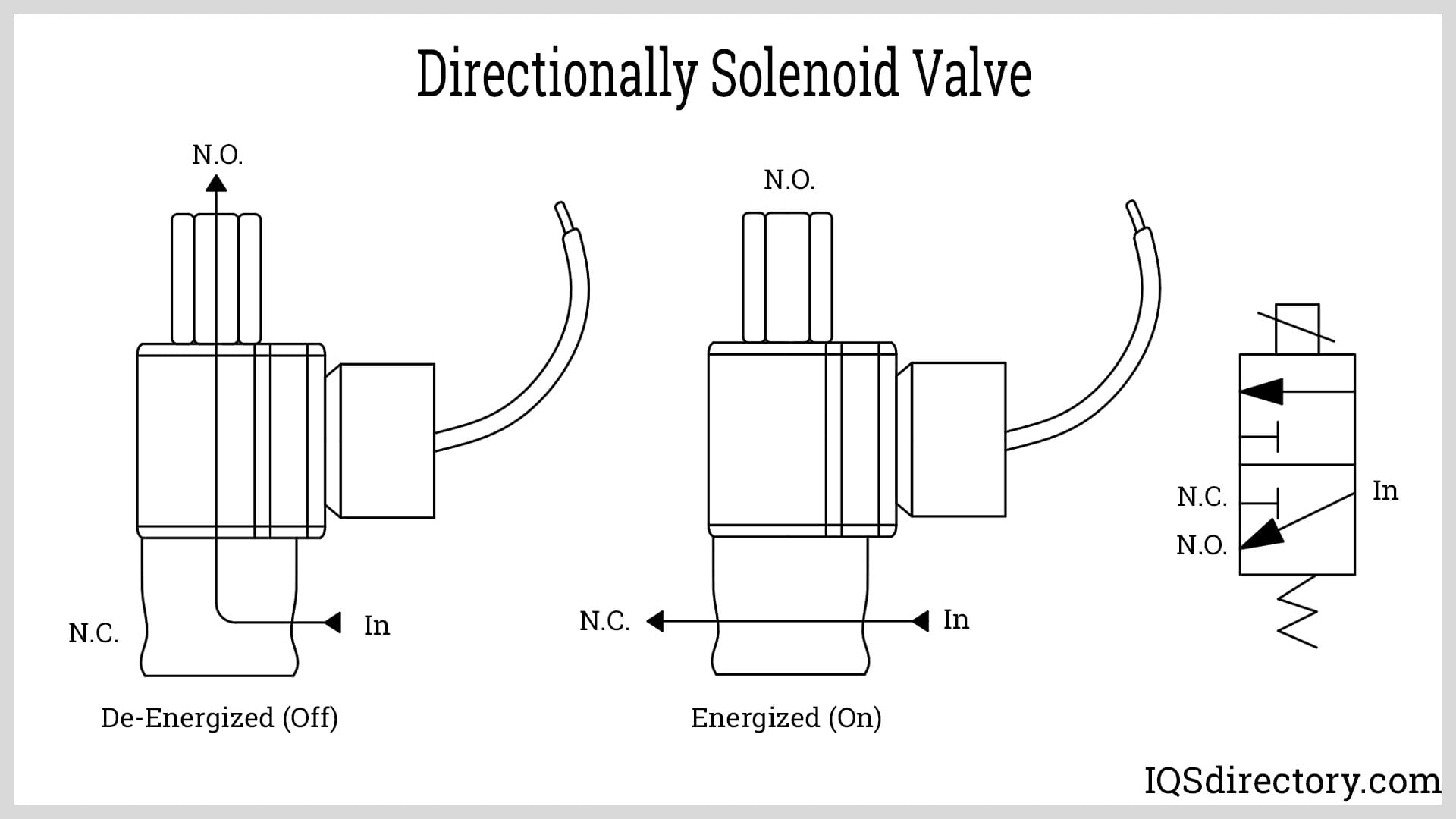
The Benefits of 3-Way Solenoid Valves
- Rapidity of response
- Little power usage
- Operated remotely
- Accommodates a variety of equipment and applications
- Affordable replacements
- Both DC and AC voltage compatible
- Use of low and high temperatures
- Blocking external leaks for safety
- Either vertically or horizontally mounted
Uses for 3-Way Solenoid Valves
- The steam from an exhaust chamber is normally directed onto a condensing coil inside a water reservoir using a solenoid-controlled vent valve.
- Smaller construction equipment with fixed displacement pumps can perform multi-directional functionality when coupled with 3-way solenoid valves. Changing the flow channel as required by a specific application, such as from up and down movement to lateral or tilt movement, these valves get over the inherent drawbacks of constant flow. As a result, 3-way solenoid valves offer a more convenient and cost-effective alternative to the traditional approach of enlarging the valve and pump to produce additional flow.
- Any air in a compressor's circuit is de-energized and released by a solenoid valve.
- When a circuit designer has to switch the flow from one leg of a circuit to another by emulating a traditional directional spool valve in a unique manifold architecture, several 3-way solenoid valves can be a cost-effective alternative. In addition, if dumping is required and the system needs more than one additional function, these valves can also be combined to meet specific functional and space requirements.
Choosing the Right 3-Way Solenoid Valve Supplier
To make sure you have the most beneficial outcome when purchasing 3-Way solenoid valves from a 3-Way solenoid valve supplier, it is important to compare at least 4 to 5 companies using our list of 2-way solenoid valve suppliers. Each 3-Way solenoid valve supplier has a business profile page that highlights their areas of experience and capabilities and a contact form to directly communicate with the supplier for more information or request a quote. Review each 3-Way solenoid valve business website using our proprietary website previewer to get an idea of what each company specializes in, and then use our simple RFQ form to contact multiple 3-Way solenoid valve businesses with the same form.

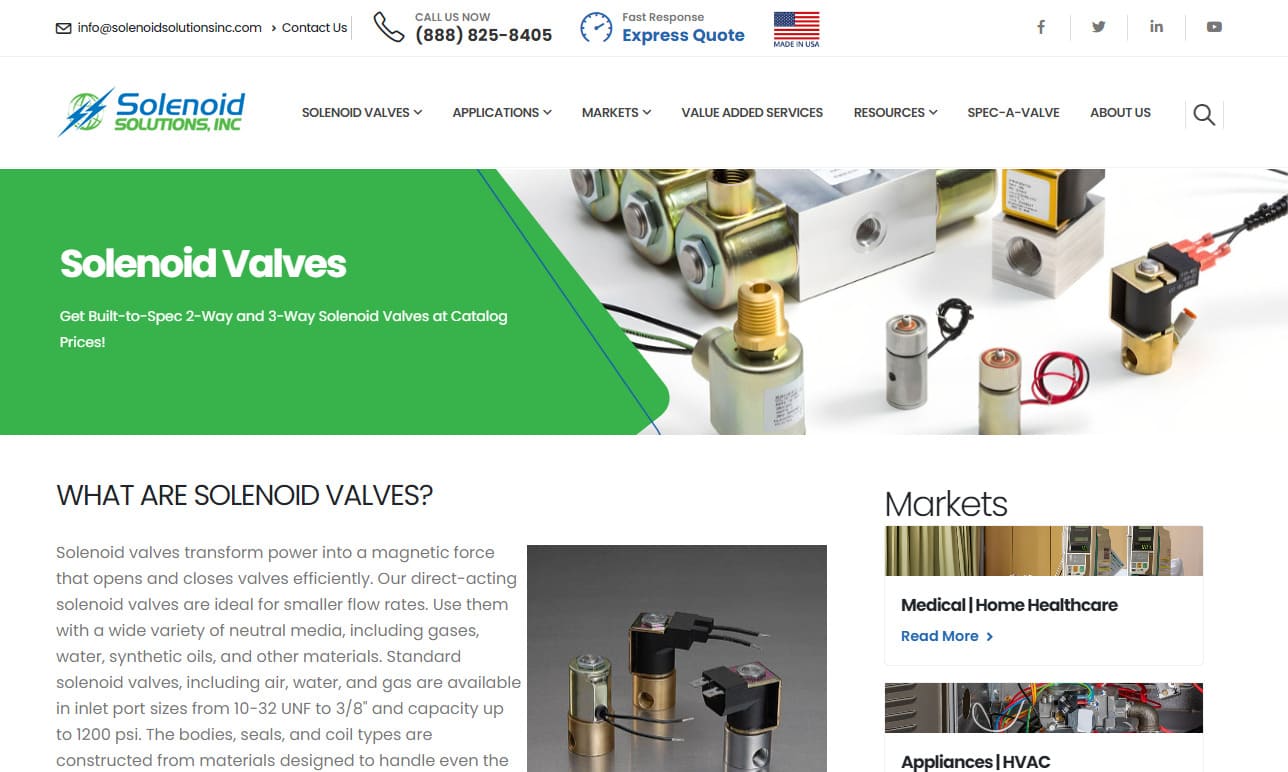
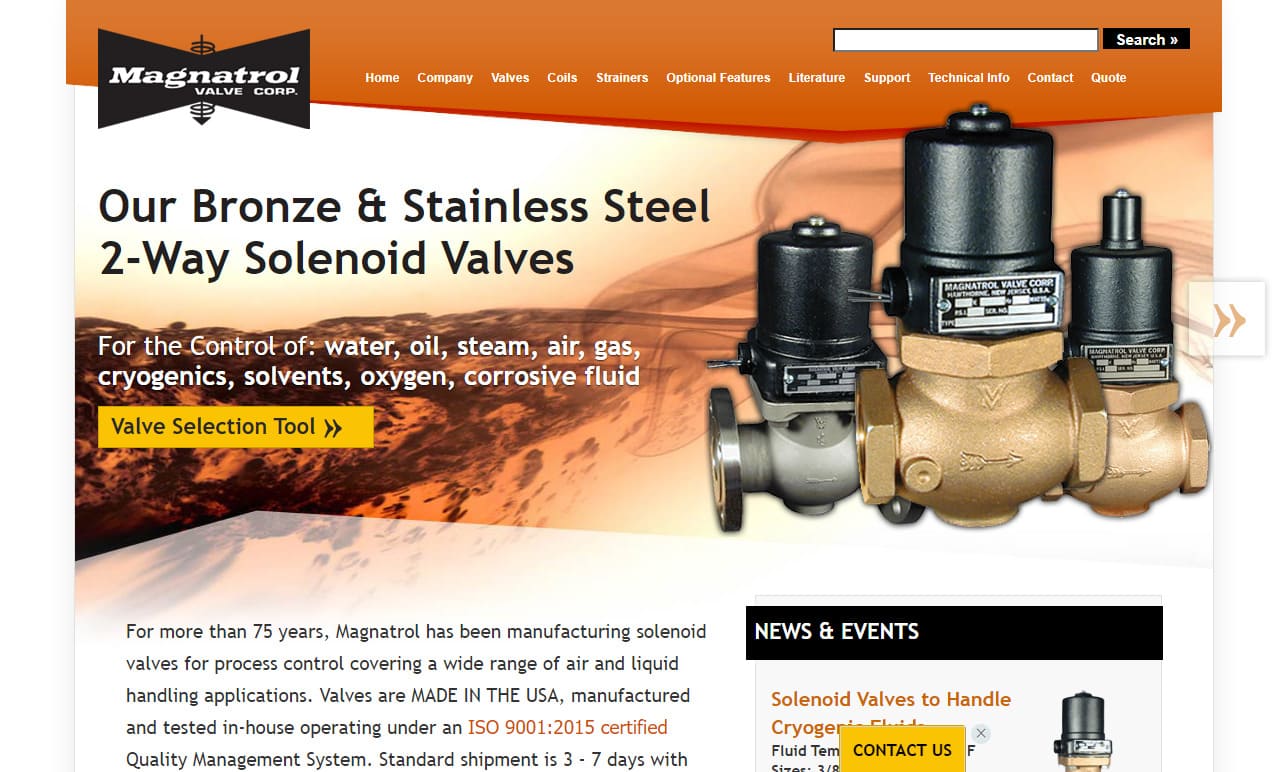

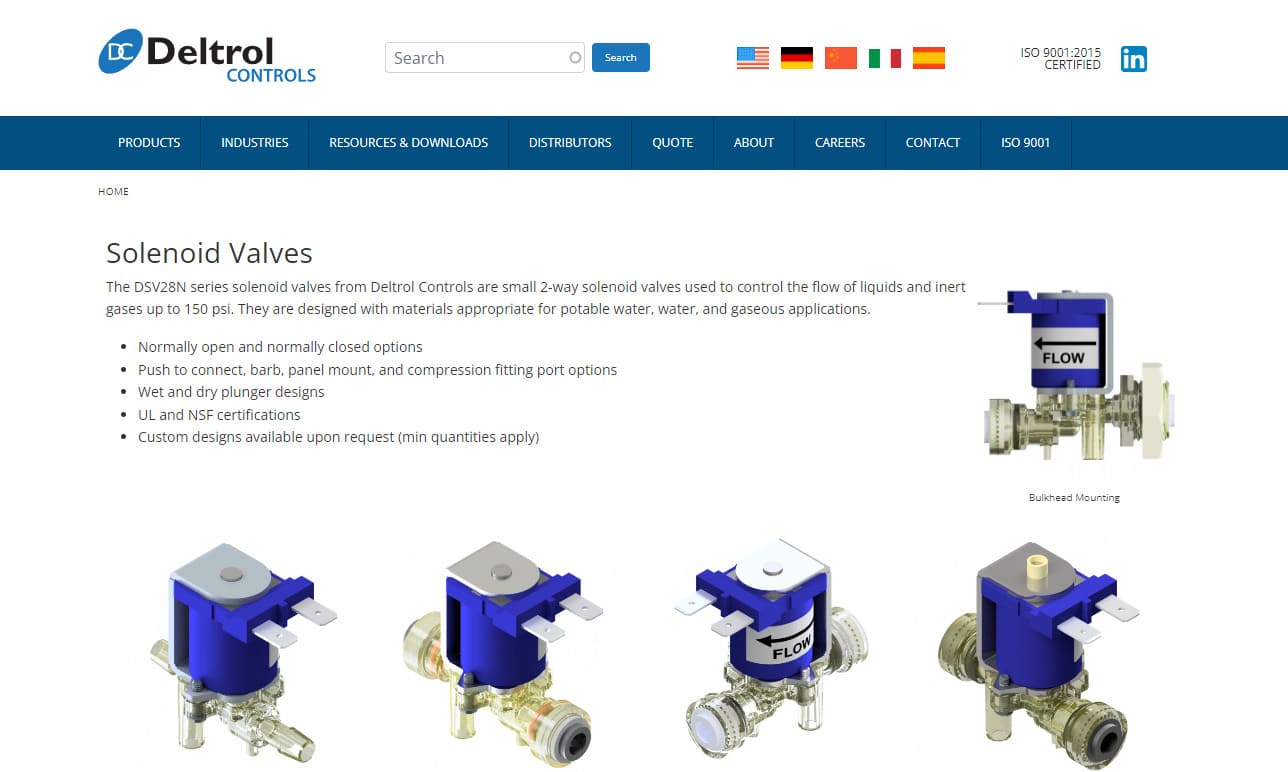
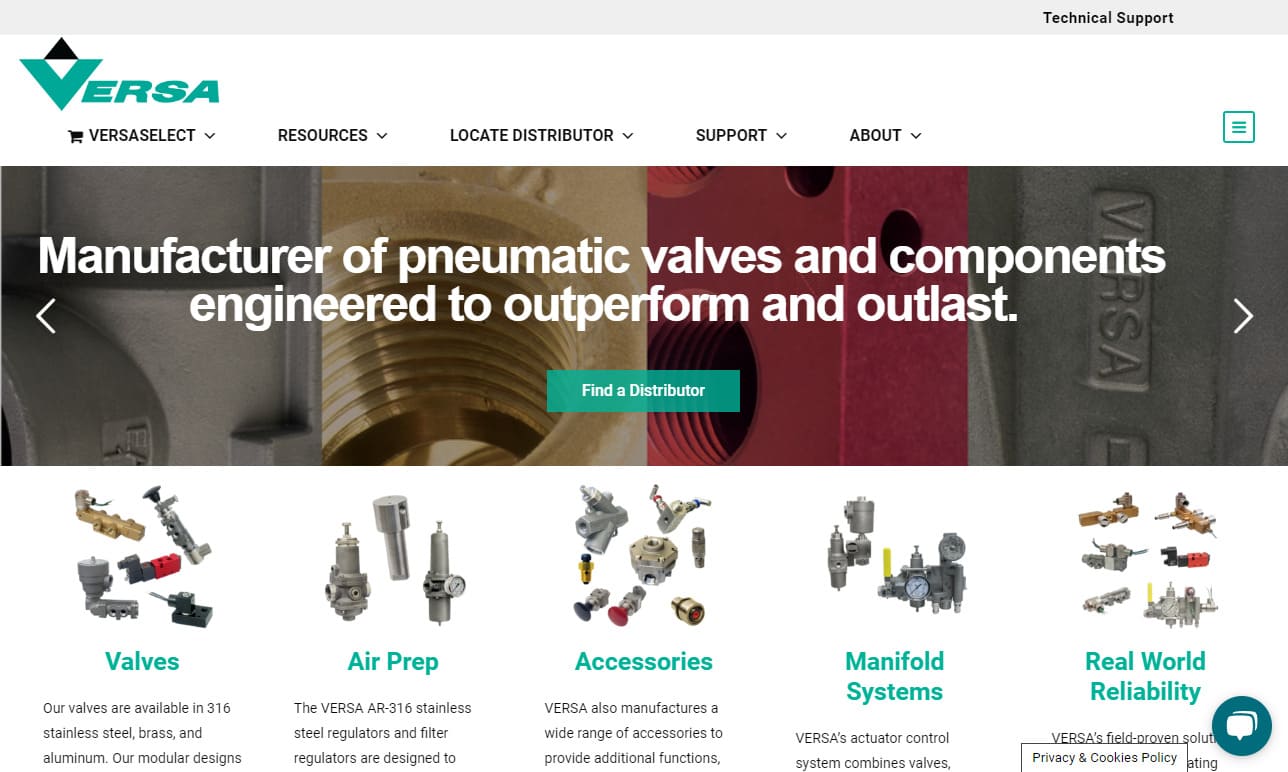

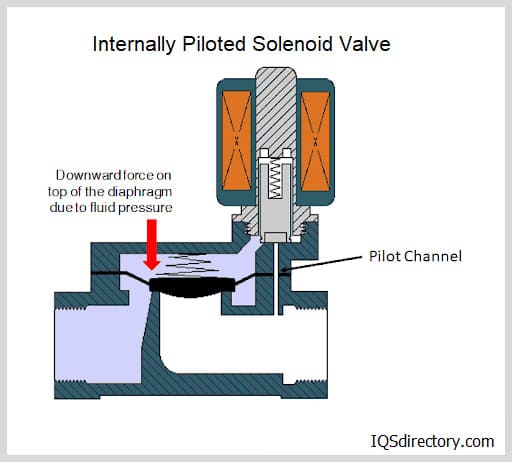
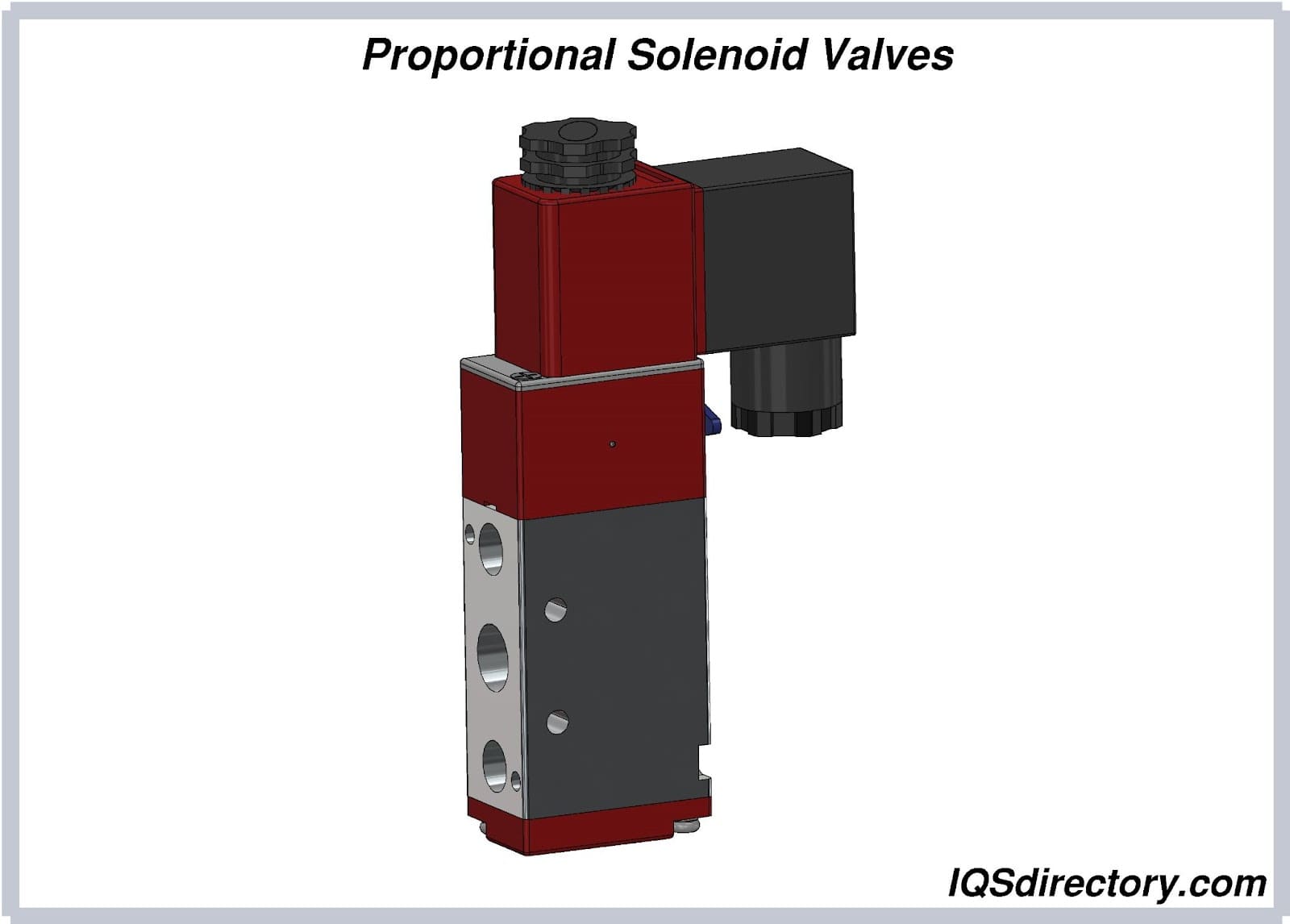
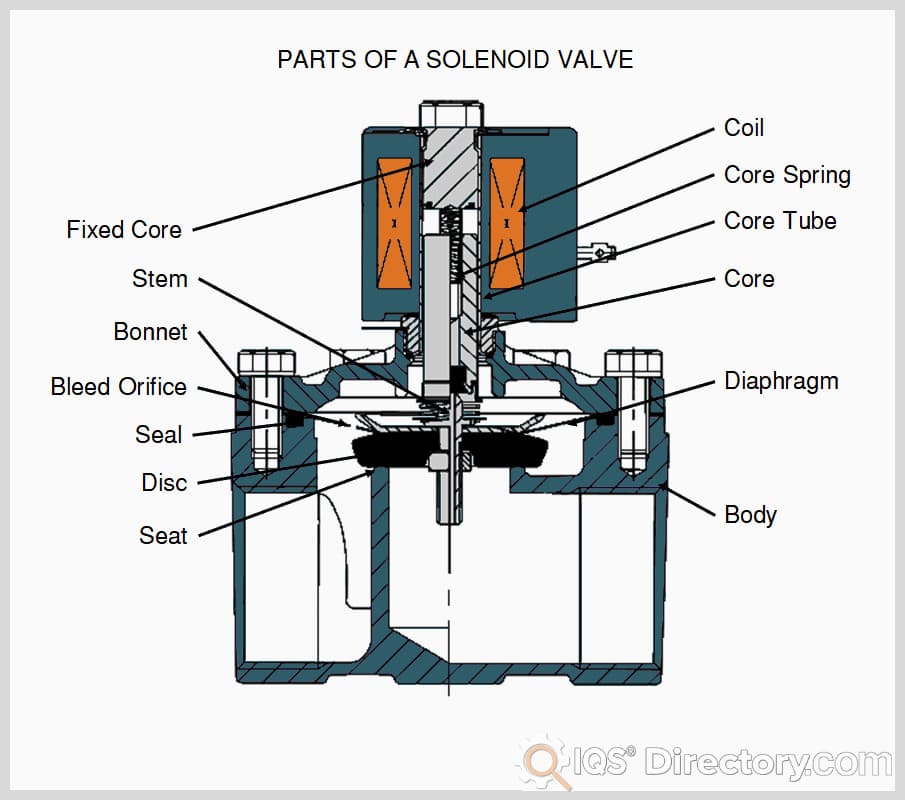
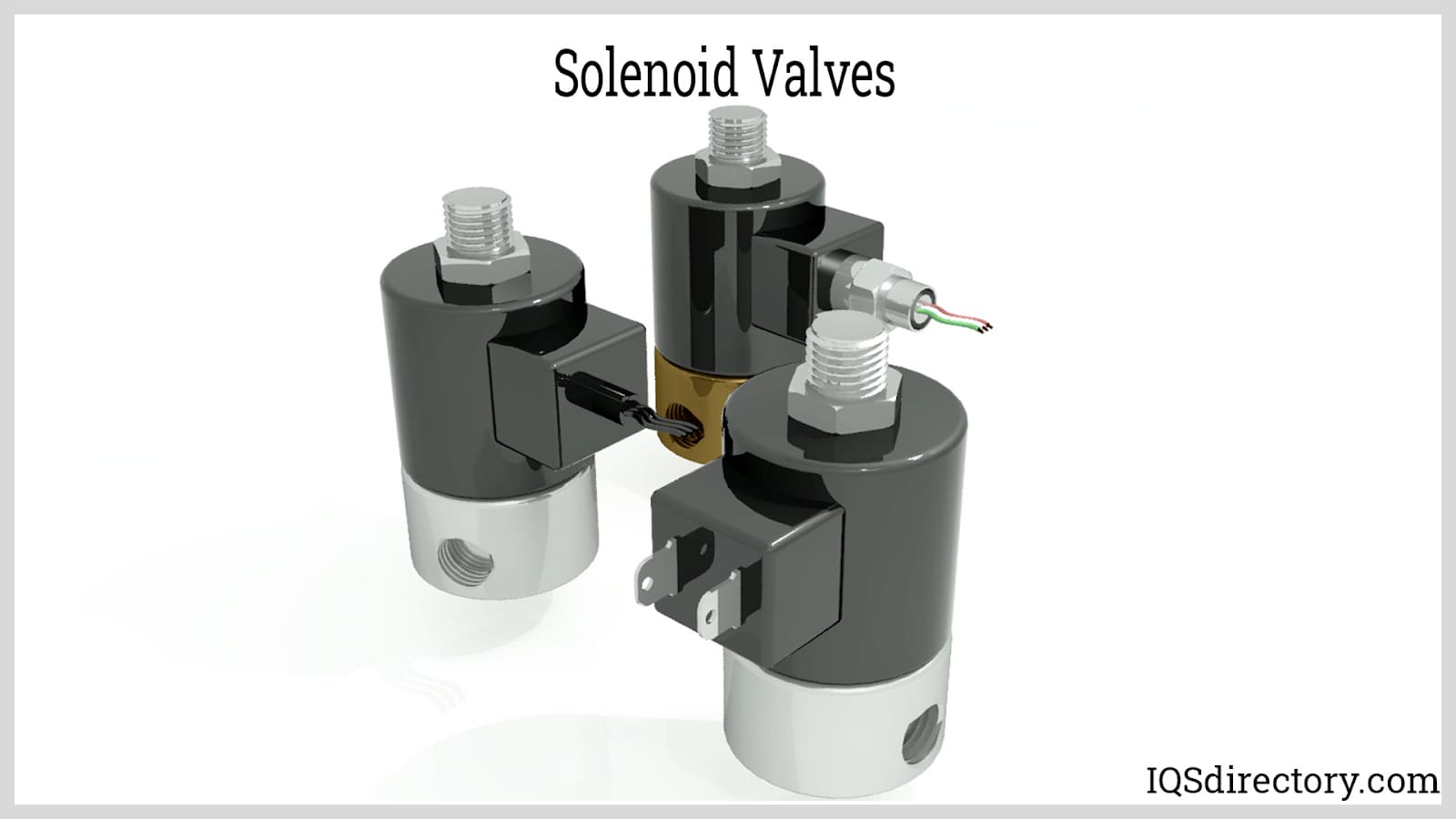
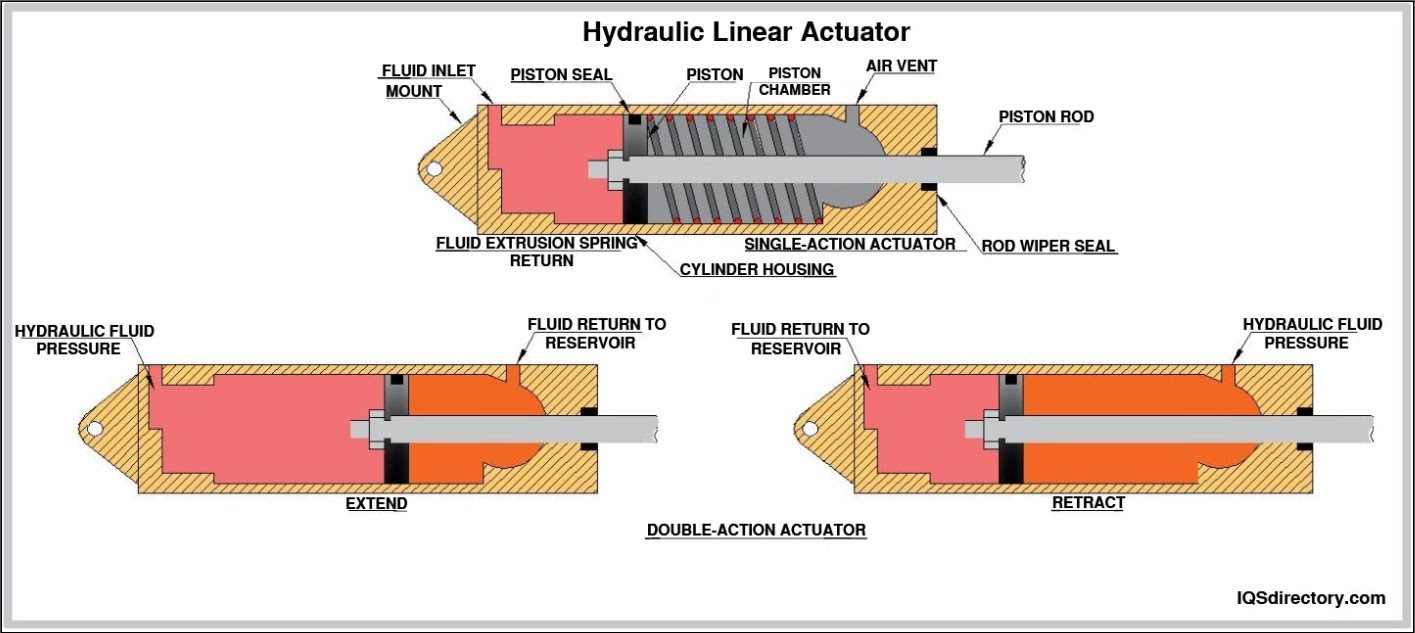
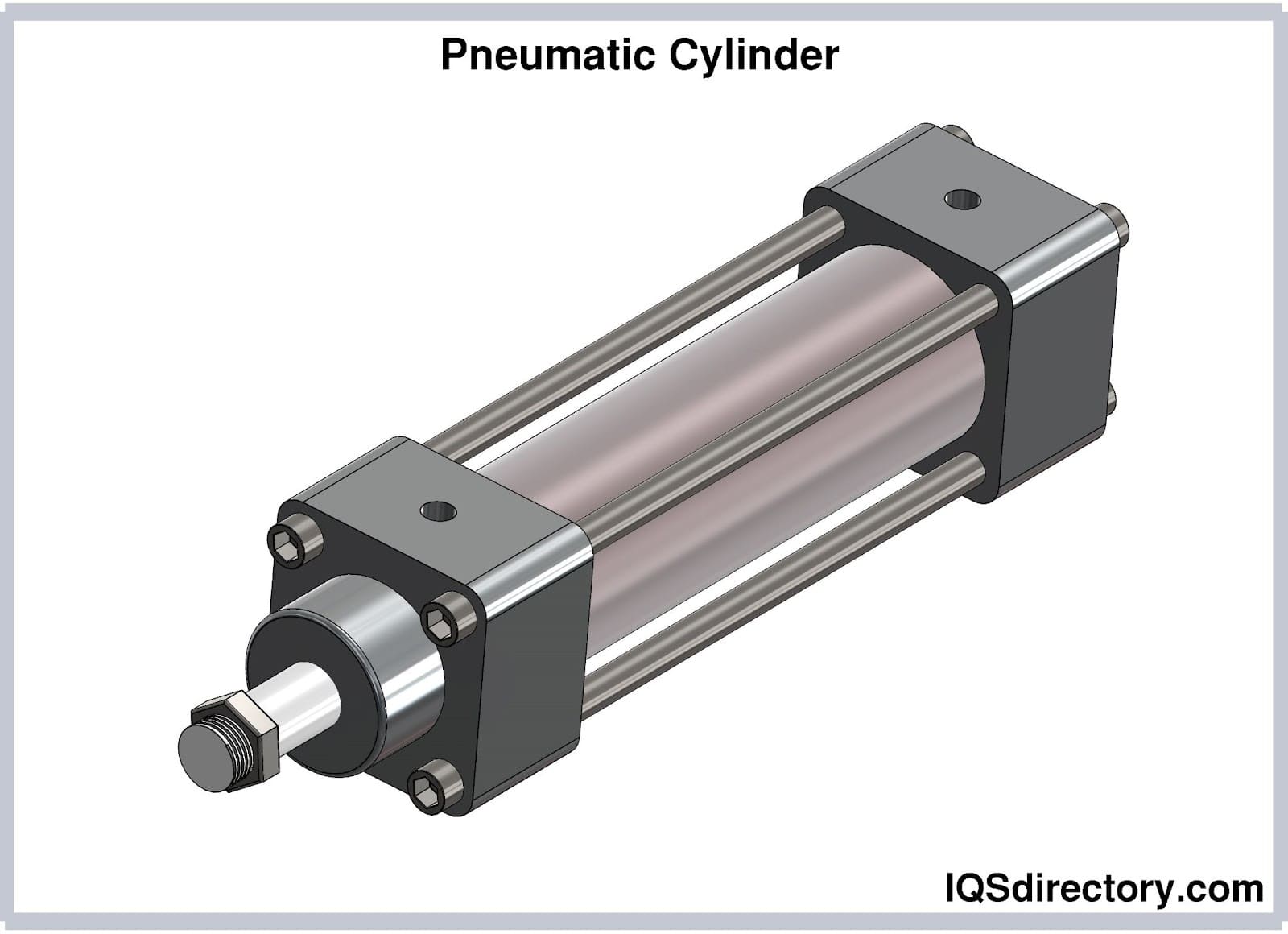
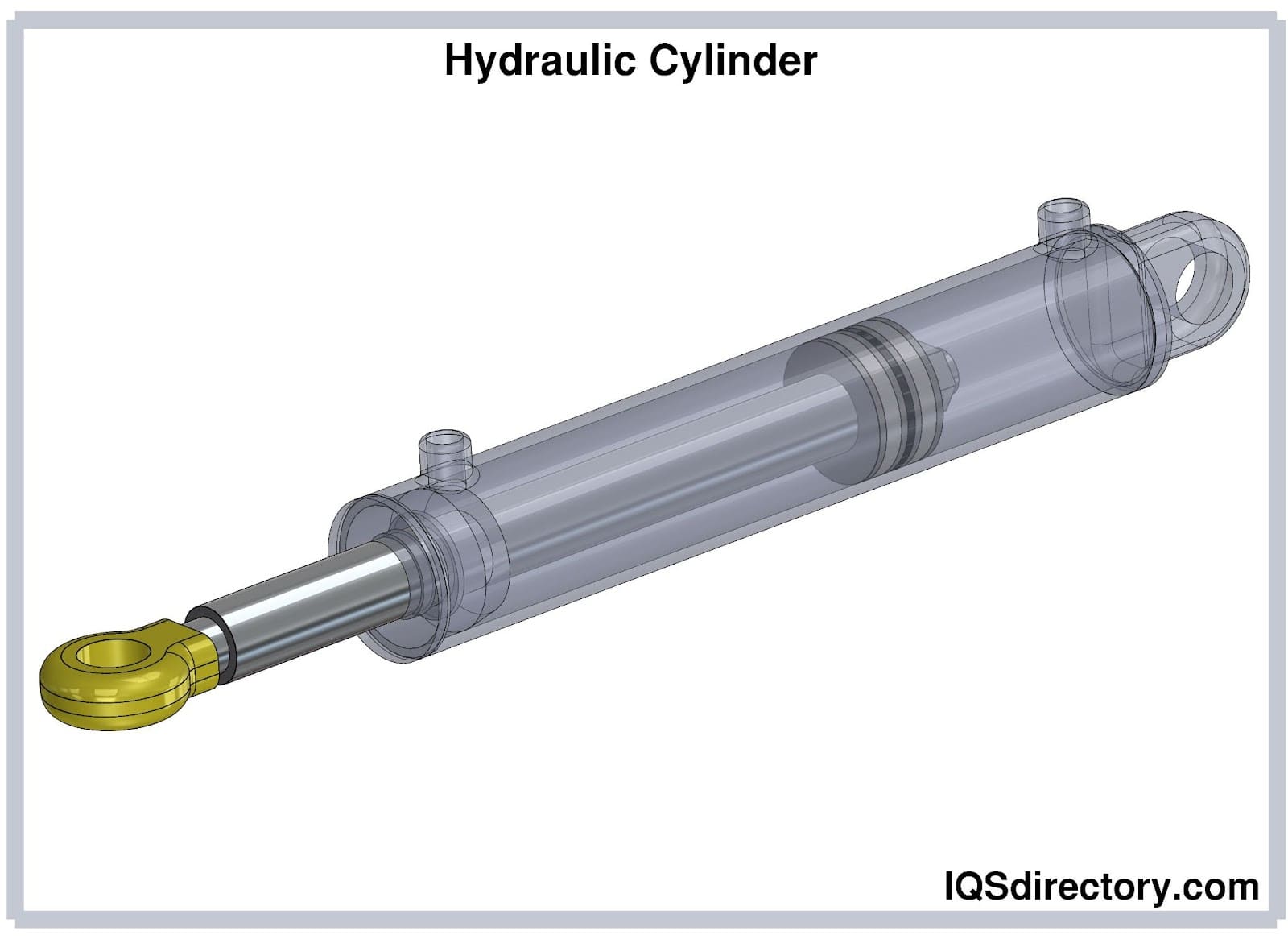
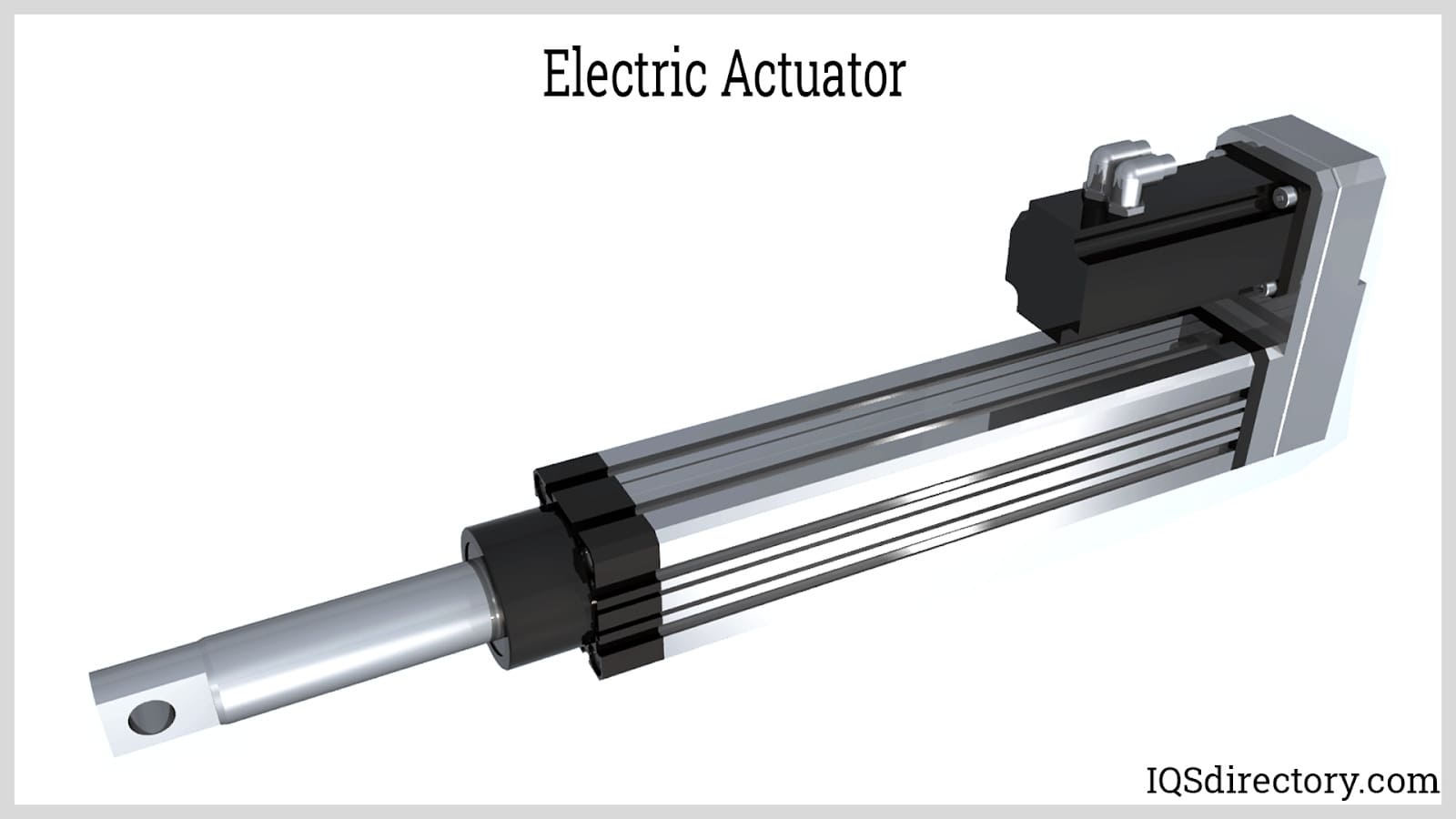
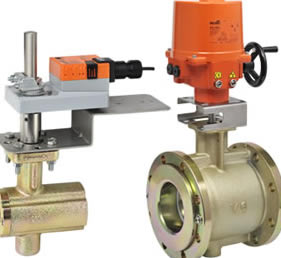 Ball Valves
Ball Valves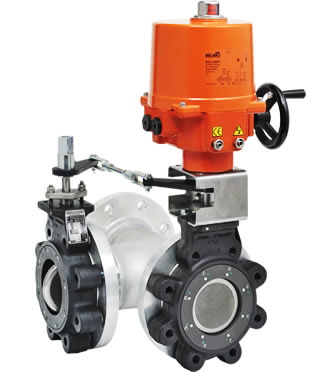 Butterfly Valves
Butterfly Valves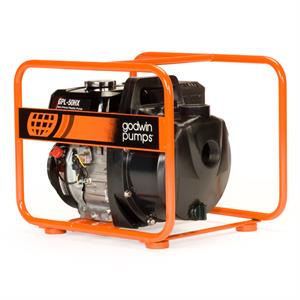 Centrifugal Pumps
Centrifugal Pumps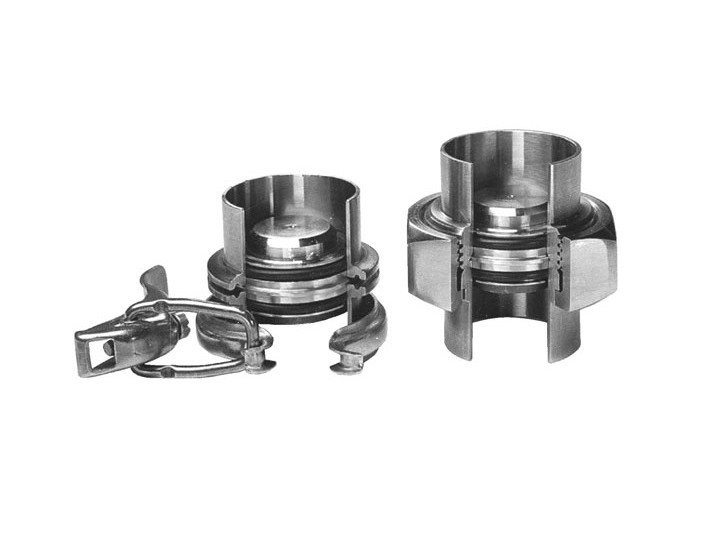 Check Valves
Check Valves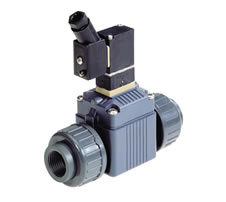 Diaphragm Valves
Diaphragm Valves Flow Meters
Flow Meters Hydraulic Pumps
Hydraulic Pumps Hydraulic Valves
Hydraulic Valves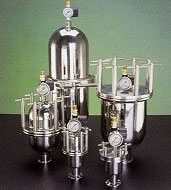 Metering Pumps
Metering Pumps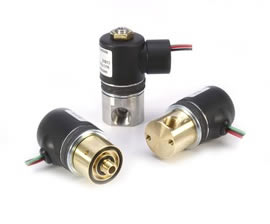 Solenoid Valves
Solenoid Valves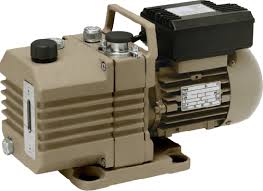 Vacuum Pumps
Vacuum Pumps Castings & Forgings
Castings & Forgings Bulk Material Handling
Bulk Material Handling Electrical & Electronic Components
Electrical & Electronic Components Flow Instrumentation
Flow Instrumentation Hardware
Hardware Material Handling Equipment
Material Handling Equipment Metal Cutting Services
Metal Cutting Services Metal Forming Services
Metal Forming Services Metal Suppliers
Metal Suppliers Motion Control Products
Motion Control Products Plant & Facility Equipment
Plant & Facility Equipment Plant & Facility Supplies
Plant & Facility Supplies Plastic Molding Processes
Plastic Molding Processes Pumps & Valves
Pumps & Valves Recycling Equipment
Recycling Equipment Rubber Products & Services
Rubber Products & Services